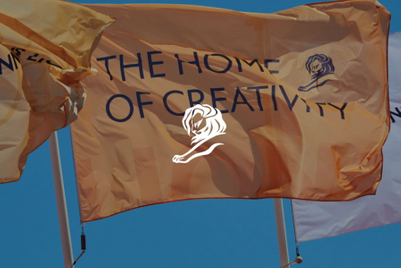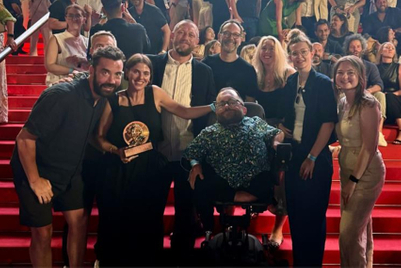
The CEO and chairman defines Yahoo around four businesses: search, mail, digital magazines and video powered by Flickr and Tumblr.
“When I came to Yahoo I felt we needed to create a chain reaction and a virtuous cycle,” Mayer said. “Hire great people, build great products, those products attract users, traffic creates revenue which can then be reinvested in hiring great people.”
During Mayer's tenure, Yahoo has reinvented its existing products around mobile and launched a few more. Its weather app, which drew on content from Flickr, earned the company its first Apple design award. Yahoo has also been launching a slew of revamped digital magazines around interests such as tech, food, travel and most recently (June 16) beauty.
To power the magazines and Yahoo News in general, Mayer has been hiring talent skilled either in editorial or their respective fields, including Katy Couric as global anchor, Bobbi Brown to helm beauty and David Pogue for tech.
“When we looked at Yahoo News and how it has been functioning, it was less about creating new interesting editorial work and more about repackaging," Mayer said. "We're looking to build a more blended approach that has not only partnered or repackaged content, but to bring editorial strength back to Yahoo News and craft interesting editorial work for ourselves.”
Thanks to these initiatives the company has reversed the declines in traffic it saw in 2011 and 2012 and has 430 million mobile users a month, representing year-on-year growth of around 30 per cent.
In April, Yahoo reported 98 per cent growth in the first quarter of the year compared with the same period last year in its four key areas, mobile, social, video and native. Its display revenue, excluding traffic acquisition costs, was $409 million, an increase of 2 per cent. According to WSJ this is the first growth it's seen in the category for awhile.
Native advertising to take over
Despite the growth in display, Mayer believes that native advertising is key to monetising Yahoo. The non-intrusive ad format, she said, is entwined with crafting an experience around a user experience, particularly on mobile. “Native advertising is much less disruptive and far more integrated with the user experience,” said Mayer, adding that she doesn't believe advertising must inevitably be disliked by users. “It's an area that needs innovation," she said. "There are better, more powerful ways of reaching audiences online than display.”
Mayer shared a personal anecdote to back up this position: One Saturday morning she noticed that her son was paying attention to the ads but turning away when the cartoons came back on. "He found advertising more entertaining than the 30-minute long cartoons," she said. "When you think about it, TV ads are native. They are 30-second stories embedded in a 30-minute story. Print ads add to the aspirational factor of the medium and radio is smaller programming in previously scheduled programming. On a PC however, the ads are stickers around the content. It was never native to its environment.”
This has perhaps been online advertising's greatest mistake and why mobile advertising has failed to take off in the past. “We know that after seeing a native ad, a user is 3.6 times more likely to conduct a brand search and six times more likely to run a related search versus a display ad,” she said during her talk on stage at Cannes Lions 2014. During the closed-door media session, at which Campaign Asia-Pacific was the only trade publication, she further elaborated that on Tumblr, an average sponsored post is reblogged 10,000 times.
 In February, Yahoo launched Gemini, a unified marketplace for mobile search and native ad placement that it calls 'stream ads'—small, text-based ads that fit with the content and are personalised to the user. “We're really happy with our native ads,” she said, while demonstrating the integration of native ads with content on Yahoo's app using her phone. “The overall ads fit and they work with the content.”
In February, Yahoo launched Gemini, a unified marketplace for mobile search and native ad placement that it calls 'stream ads'—small, text-based ads that fit with the content and are personalised to the user. “We're really happy with our native ads,” she said, while demonstrating the integration of native ads with content on Yahoo's app using her phone. “The overall ads fit and they work with the content.”
Yahoo, she said, is working on finding the sweet spot that balances the number of ads with content and pairs it with the precision of advertising. “An advertiser might be willing to spend $10 for the right user, or underpay for the wrong one," she said. "It's really about helping them target, and as our stream ads are on a CPC basis, the onus is on us the publisher to show the right ad to the right user.”
By the end of the year, the company has said on other occasions, it may look to move all its mobile advertising to a native ad format.
Yahoo in Asia
Yahoo in Asia, particularly in Hong Kong, Taiwan and Japan, is in a unique position within the company as it is in these markets that Yahoo has maintained a leadership position. As a result, Yahoo won't be looking to change what already works for the region, said Mayer. “Our e-commerce business in these markets is very successful, and we won't want to assimilate or align it with the broader product in the face of the success we've seen.”
At the same time, the region may see introductions of features that have worked well elsewhere, she added.
One app that has gone international is News Digest, which, although globally available, has just had a UK-version launched. “We are also working on our World Cup app and we are bringing stream ads to EMEA and APAC,” said Mayer.
Overall, markets outside the US will represent a greater focus for Yahoo in the year ahead. “We're really committed to growing our international business,” she said.
Search and video
Two further important areas of investment for Yahoo, Mayer continued, are search and video. The company, which has been criticised for not focusing enough on search and outsourcing the function to Microsoft, now has a a plan around search, of which Yahoo Gemini is a major part.
“We've started to develop our own search offering and we're not only working with Microsoft anymore, but we'll let that product unveil itself,” she said, adding that she dislikes speaking about products before they are launched.
While Yahoo has been looking to acquire a video platform, it hasn't quite found the right one yet, said Mayer. Last year, the company had been close to clinching a $200 million deal to acquire Dailymotion when the French government reportedly refused to allow Orange to sell the platform.
So while Yahoo keeps looking, it's investing in content, running live concerts and launching two comedic original series: a futuristic comedy titled The Other Space and Sin City Saints, which is about a Silicon Valley tycoon who buys a basketball team. Besides TV-length content, Yahoo will also be creating small short-form videos that align with the interest verticals of its audience.
The WFH (work from home) issue
While Mayer has been credited with fixing Yahoo's talent drain, she has also been heavily criticised for one of her early moves, which was to halt the company's work-from-home policy because it seemed at odds with her resolution to make Yahoo a great place to work. At the time she refused to comment on the issue, but has since grown more open to discussing the policy change.
“The truth is the policy change affected less than 1 per cent of the company,” she said. “At the time we chose not to correct a lot of the facts publicly and it was viewed as a statement for something it wasn't and made out to be larger than it was.”
The change, she continued, was necessary for Yahoo at the time. “We needed to get more energy and focus to increase productivity for the workforce,” she said.
Today, said Mayer, morale and energy are running high. “We've been turning out quality products, we just won our second Apple design award [for the News Digest app]," she said. "It's really great to have won an award for design, two years consecutively, from a company known for design.”
Overall, Mayer is pretty optimistic. “I feel we've made progress and in many ways, faster than I expected.”
Follow Campaign's global live coverage from the Cannes Festival at cannes.campaignlive.co.uk
This article first appeared on http://www.campaignasia.com





.png&h=268&w=401&q=100&v=20250320&c=1)


.jpg&h=268&w=401&q=100&v=20250320&c=1)
.jpg&h=268&w=401&q=100&v=20250320&c=1)
